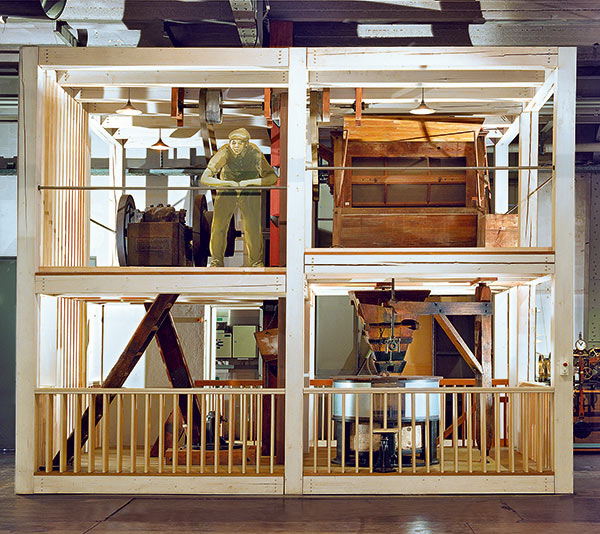
Gypsum mill
A gypsum mill once powered by the waters of the Pegnitz river is situated at the beginning of the visitor walkway in the area devoted to work and technology. The mill represents many hydro-powered facilities from the pre-industrial era – flour mills, hammer mills, and much more.
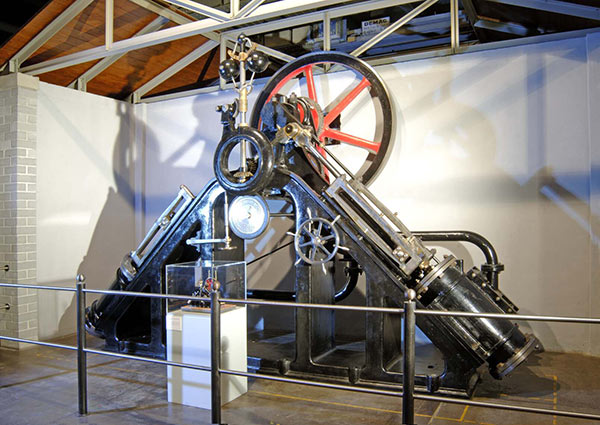
J. W. Spaeth engineering works
A two-stroke piston steam engine and a small shop of belt-driven machinery commemorate the late millwright and technician Johann Wilhelm Spaeth.
The small steam engine on display, which still works and is available for demonstrations, originated in Spaeth's factory. Spaeth provided equipment and production technology for many factories in Nuremberg. The 15-horsepower steam engine, one of only two ever built, was put to service in Nuremberg’s railroad repair yard.
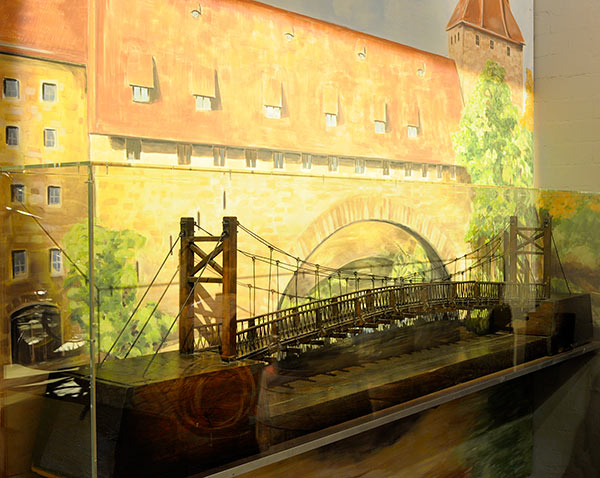
Kettensteg suspension bridge
The model of Nuremberg's Kettensteg suspension bridge, one of the first iron bridges in Germany, harkens back to the pre-industrial era.
The Kettensteg bridge, which stood adjacent to the old fortifications near Hallentor, was built in 1824 by Konrad Georg Kuppler, a mechanic and instructor at the Polytechnic School. At the time, technical journals such as Dingler's Polytechnic Journal were spreading the word of novel bridge constructions using cast iron or wrought iron chains, but an actual theory of suspension bridge construction did not yet exist.
Kuppler referred to the few construction blueprints published in the journal and relied largely on empirical methods when implementing his bridge model executed "with circumspection and thoroughness according to the laws of statics and mechanics." The model, also dated 1824, is among the oldest items on display at the Museum for Industrial Culture.

Steam engine hall
Unlike Spaeth's machine company, MAN – formerly known as Cramer Klett – focused all its efforts on factory production.
In the museum, this is symbolized above all by the huge MAN tandem steam engine, which once delivered some 1,100 horsepower to power an entire rolling mill at the Julius Tafel ironworks. The steel colossus still impresses visitors when it moves once again today during museum demonstrations. The steam generator and turbine also helped drive industrialization.
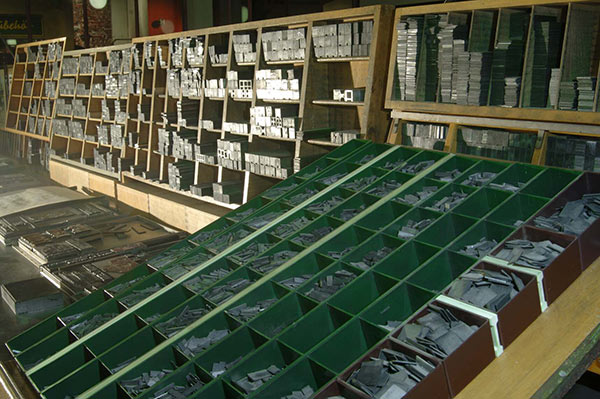
Printer's workshop
The fully functioning 1930s-era hot metal typesetting print shop brings back to life an old technology that disappeared with the rise of computers.
Experienced printers offer hands-on demonstrations in which visitors can help design and print new business cards, for example.

Technology retrospective
Nuremberg's role as a pioneer in the fields of telecommunications and radio/TV technology is all but forgotten. The city owed its reputation in no small part to "Süddeutsche Telefonapparate, Kabel und Drahtwerke AG" (TeKaDe), the company that produced Germany’s first television sets.
The museum uses over 500 objects to trace the path from the "traditional" engineering company to the age of modern communications. The unique presentation features key objects from the world of telecommunications as the stars of a DVD show, with a famous host guiding viewers through the history of telecommunications. Visitors experience an exciting chapter in the history of technology that also serves as an audio portrait of German history in the 20th century.
This retrospective is followed by a tour of the collection's many exhibits.
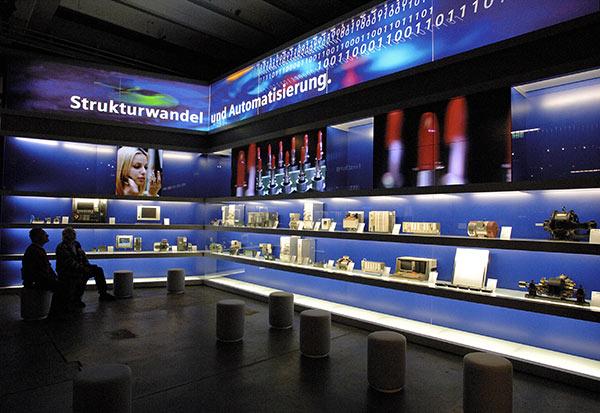
Structural change and automation
The stroll through time along the visitor walkway covers 200 years of Nuremberg's history, taking visitors right up to the present day and culminating in a new, technologically sophisticated exhibit showcasing Nuremberg’s transformation from an industrial city to a stronghold of science, education, and the service industry.
There were winners and losers in this structural change. Some sectors and businesses with a long tradition rose to the challenges of globalization and emerged from the process stronger. A strong complement of midsized companies and numerous "hidden champions" and new companies such as DATEV or GfK ensured that Nuremberg suffered no net loss of jobs. Today, Nuremberg is at the heart of a European metropolitan region.
The history of the PC, the invention of the mp3 format, and a robot used in truck engine production all tie into this topic. The presentation uses state-of-the-art media and features many hands-on exhibits.


